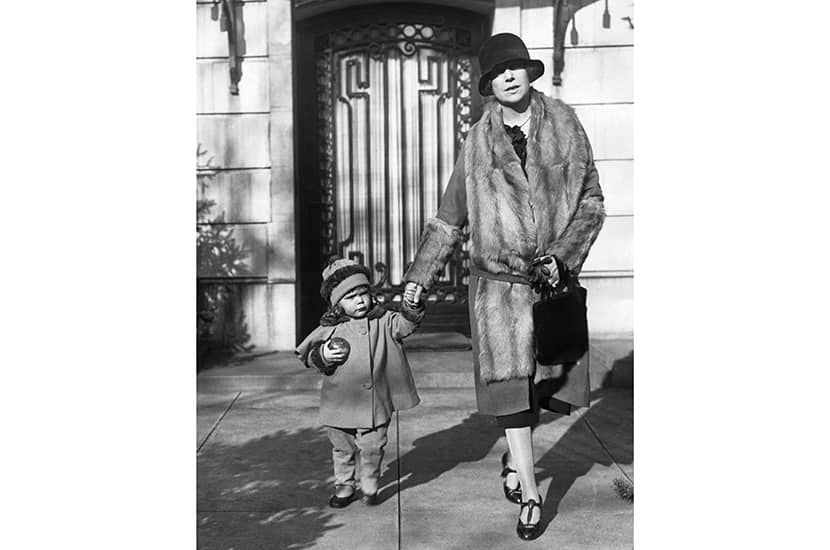It was only in 1948 that the term WASP was coined — by a Florida folklorist, Stetson Kennedy. Yet White Anglo-Saxon Protestant never satisfactorily defined this all-but-extinct breed of American Brahmin. In his sweeping, teeming study of the WASP, Michael Knox Beran concedes that the acronym fumbles its origins. For one thing, it excludes the Celts and Anglo-Dutch Patroons, several of whom lent gravitas and grit to the term and tribe. For this reason too, ‘Wealthy English Episcopalians’ does not work. It may extract the sting but it is belittling, so why tinkle with it?
It is sufficient to say that to be a WASP one should have been descended from the well-to-do classes of colonial and early republican America. Beran’s six pages of genealogical charts underscore the potency of descent and that sense of family.
In his great sweep — at times it seems more like a swipe — Beran has fun with a huge caste (yes, caste) of characters from Adamses, Alsops, Astors and Auchinclosses to Whartons, Whitneys and Woodwards. We meet good doughty souls, such as Eleanor Roosevelt, and gentle ones such as Amory Gardner. There is T.S. Eliot, Gore Vidal, Edmund Wilson, the beauteous Babe Paley and the brilliant Bundys.
Beran’s knowledge and research are prodigious. He has mined a rich seam of material and unearthed some gems. With acerbic asides and witty one-liners, he paints a vivid picture that praises or punctures these superior persons.
Bernard Berenson described one of Pierpoint Morgan’s houses as ‘a pawnbroker’s shop for Croesuses’
That titan and voracious collector Pierpoint Morgan, although from Hartford, ‘came to embody the brownstone virtues of New York’s WASP aristocracy’, but
in pillaging the old places and appropriating their plastic and painted beauty, Morgan, like [Henry James’s Adam] Verver, only intensified the country’s philistinism, making art into a roped-off, Sunday-best sort of thing, incapable of brightening the prosaic day.
Bernard Berenson described one of Morgan’s houses as ‘a pawnbroker’s shop for Croesuses’.
There is the Bostonian Isabella Stewart Gardner. ‘Her tactics were outrageous, even vulgar, but in a city whose leading citizens had been bled dry by Puritanism and frugality, ostentation was poetry.’ To Henry James ‘she was not a woman, she was a locomotive — with a Pullman car attached’.
Lunching with Teddy’s daughter Alice Roosevelt Longworth was, according to the last of their salonistes Joe Alsop, ‘like breaking bread with a scorpion’. The voluptuous Marietta Peabody Tree is described — again by the drawling, droll Joe — as a case of ‘beautiful bosoms beating for beautiful causes’. And, although all Irish, John F. Kennedy
was the most WASP-oriented of the American presidents, more respectful of WASP mores than the maverick Roosevelts or the transplanted Bushes pushing their fortunes in the alien corn of Texas. Seeking to unwind, he unwound with WASPs.
In fact, Beran’s first book, The Last Patrician (1998), was a study of Bobby Kennedy. His theme: that RFK was steering away from the liberalism of FDR and his brother, taking a more conservative course. Beran’s occasionally chaotic arguments undermined his thesis. But the book’s liveliness and spark made it stimulating and illuminating.
And so it is with WASPS. It is chaotic, yet even the subtitle, ‘The Splendor and Miseries of an American Aristocracy’, reveals an exuberance and zip. Beran might have chosen ‘The Aspirations and Absurdities…’ but that would have discounted the achievements of imperfect yet noble giants such as the two presidents Roosevelt, Endicott Peabody and Henry Adams — pivotal patricians who dominate the narrative, striding through most of Beran’s 37 random chapters.
There is Theodore Roosevelt, the 26th president, histrionic, flamboyant and ‘too rococo, and in some ways too great a character to be a true WASP’. Peabody was the seminal figure, the founding rector of Groton, the little school that shaped and primed generations of WASPs. Teddy Roosevelt thought him ‘the most powerful personality he had ever encountered’. Louis Auchincloss had never met a man ‘who radiated such absolute authority’, inspiring his classic, The Rector of Justin. As for the sphinx-like Franklin, ‘the greatest of the WASP reformers… ever the master of the manor’, after the old rector’s visit to the White House, the 32nd president murmured: ‘You know, I’m still scared of him.’
Henry Adams, ‘the unofficial pontifex Maximus’, great-grandson of the second president and grandson of the sixth, is one of the book’s heroes. Beran regards his The Education of Henry Adams as in some measure inventing the WASPs: ‘The tribe’s foremost primer.’
A century later, Beran, a fellow Groton-ian, has written their obituary. His first sentence is: ‘How do you write about flawed people in a scrupulous age?’ Well, it seems you do it with gusto. His premise? The WASPs simply failed to regenerate, and while Beran believes that their most significant contribution is ‘lost in a haze of dry martinis’, they did ‘generate places in which different aspects of the soul could ripen’.
If the fictional chronicler of the WASPs is Louis Auchincloss and its memoirist Henry Adams, they have found their historian in Michael Knox Beran.






Comments